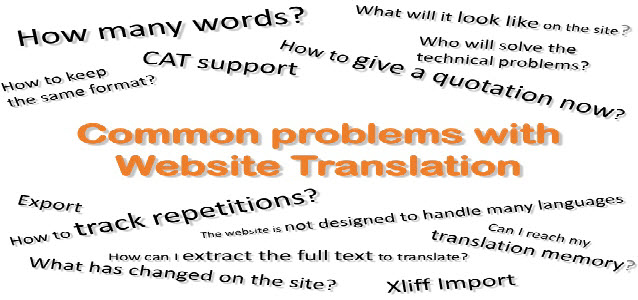These days, businesses are more international than they have ever been. A global market is within reach through the internet and many businesses use their websites to market and sell their goods – if not online then through a network of sales outlets. Successful international marketing depends not just on the message being promoted but on the way it is translated into the languages spoken and understood by the target market population. This is a crucial part of what makes a competitive global business: how many people can a website be understood by? Website translation services have mushroomed to take up the demand for effective marketing translation. Despite this ready availability of translation services, businesses are still making mistakes in translating website marketing material which is costing them business. Here are some of the most common mistakes.
Problem No. 1: Avoiding translation agencies
It might seem to be a sensible way of cutting costs to use an in-house translator or member of staff to translate a website page or whole site, but a translation agency will have access to a range of translators and may have just the right set of skills to match the content you are dealing with and the specific audience you are trying to reach. In addition, translation agencies frequently use translation software which speeds up translation and makes it more consistent.
Problem No. 2: Not changing the content to match the audience
This is not a matter of translation itself, but it has to do with the content being localized. Localization refers to making the marketing content relevant to the culture of the people for whom the translated website is aimed. This means that not only does the material on the website have to be changed to match who it is aimed at, but the translator or translators used to do the translation should have sufficient experience with the idioms and cultural preferences of that population to ensure that the material is appropriate. What works in your own home country base doesn’t always work elsewhere. It’s not just a matter of words alone. It could also include graphics and images that are quite appropriate wherever your business is based but are quite inappropriate in the target culture.
Problem No. 3: Assuming that any first-language speaker can be a translator
Another cost-cutting idea is to use someone – anyone – who works at your business and speaks the language in the part of the world you are trying to reach through your new website translation to do the translating for you. Even worse is to rely on an online translator to do the work for you. It’s cheap but can end up with a very poor version of the original. Put it this way: if you expect a marketer to be a professional and pay them accordingly, then you should expect to use the services of a professional website translation service.
Problem No. 4: Giving insufficient information to the translation agency
This is not usually a problem when translating sections of a website or web page as the content is already there. However, the translator should also be told who the content is designed to reach. This includes information about gender preferences, age range, social status, and so on. If the translator is a good translator he or she should be able to use language that appeals to that specific target more effectively. You are not going to use the same language, for instance in Japanese when targeting a group of retirees as you would a bunch of twenty-somethings.
Problem No. 5: Not proofreading or editing the website copy before it goes live
This is normally something that you should be able to leave to the translator to do. All good website translation services include proofreading for errors in translation as well as cultural gaffes. If there is no one at your business end who has the ability to do a final proofread before a translated web page goes live online, then there should be a review or feedback section so that any concerns can be relayed back to you from browsers and then the necessary changes can be made. Remember that if you are going to be taken seriously by potential customers your website should appear professional and aimed at the reading level of whoever it is intended for.




